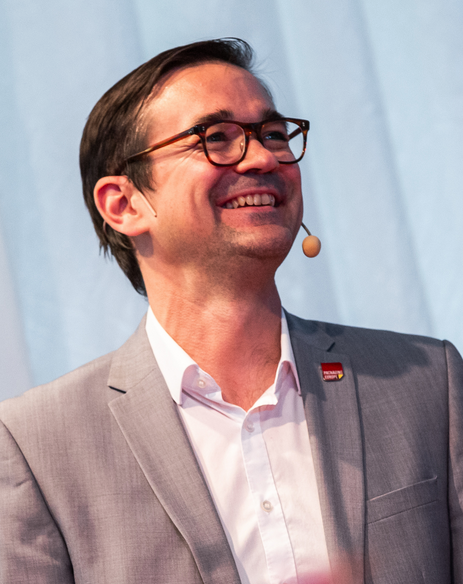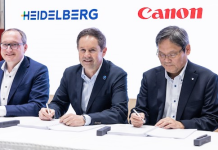Tim Sykes, brand director at Packaging Europe and writing for drupa, explores the barriers that may be holding back the digital tide.
When all the market research of recent years is projecting market growth of between 10 and 15 percent CAGR over the coming years, with corresponding advances in market share, it may sound unnecessarily provocative to suggest that digital print in packaging has failed to fulfil expectations. The value proposition of digital print is familiar enough: the ability to go from PDF to POS in a matter of hours doesn’t just make short runs and cool customisation campaigns economical but enables supply chain efficiencies and leaner stock management.
Digitally printing a package thus caters to a swathe of key market trends and demands from agile marketing campaigns and proliferation of SKUs to streamlining processes for faster time to market. However, in off-the-record conversations over the last couple of years, both brand owners and digital print specialists have confided a mild disappointment that some of the more idealistic predictions of digital conquest have not yet come to pass. What are the reasons for this? And is the post-Covid world closer to the tipping point?
We don’t all need bespoke
We’ll start with perhaps the most basic and obvious point: the largest chunk of the market is still serving long-run jobs for packaging destined for the shelves of bricks-and-mortar retailers.
As Montserrat Peidro, head of Heidelberg’s digital print business remarked, ‘The main advantages of digital print can be quantified in terms of cost per box in short-mid runs, in faster turn-around times resulting in a leaner supply chain and in its ability to produce unique boxes profitably. Examples include packages with security features, unique identifiers for track and tracing of goods, codes for connected packaging and those personalised for a specific individual.’
Yet of course there remains huge demand for generic packaging produced in high volumes and at high speeds – and analogue presses still handle the bigger runs more cost effectively, in addition to which they tend to be a considerably less costly investment. This is hardly news, but those of us who get intoxicated by disruptive innovation could do well to remind ourselves of the enduring gravitational pull of simple mathematics. As long as not everyone needs bespoke, there will be a place for analogue.
Agile technology on its own won’t accelerate time to market
That said, there is a significant and growing packaging market space where digital print can add value. Brand owners need to differentiate their multiple SKUs and increase frequency of marketing campaigns to maintain consumer attention. In this landscape, flexibility rather than raw throughput is key to productivity.
‘The printing speed of analogue does not take into consideration all the presses set-ups, including colour calibrations, waste and plates making and mounting,’ said Marcelo Akierman (HP Indigo marketing manager – EMEA region). ‘The time to market printing digitally is dramatically reduced. Brand owners can do the proofing on-site and when the target is achieved can sign on the final substrate.’
However, all too often the end user isn’t thinking as fast as the technology. As a major corrugated converter recently observed to me, they can handle an artwork change in little more than a day on traditional presses. If the brand owner’s marketing sign-off takes days or weeks, is it possible that the bottleneck is as much a business systems problem as a technological one? Brands need to become as agile as digital presses if they are to leverage their full potential – and they need to get used to making more decentralised marketing decisions. Harnessing the value of digital print will rely on integration into the wider value chain.
‘We often forget it, but packaging production is more than printing and part of a longer supply chain – from packaging design to printers, converters, packers, retailers (on-line or physical),’ said François Martin, senior communication advisor at BOBST. ‘Printing digital will save a few hours, even a few days, in a process taking months. The entire packaging production chain needs to be rewritten. Digital printing will be part of the new Industry 4.0 packaging landscape, but the digitalisation of an entire process will be the most important element.’
Conversely, as analogue print technologies are adapted to function within this connected ecosystem, they will become quasi-digital themselves.
We are still rewriting the rules
Digital print facilitates an altogether more intimate degree of consumer engagement just as the broader digital transformation of our world is making consumers expect gratifying communication from brands across every moment of truth.
‘There’s no question that customisation is one of the biggest trends driving the adoption of digital package printing,’ said Donald Allred, VP of Packaging, Memjet. ‘When packaging is produced in a late-stage customisation process, using digital printing is not only possible – it is preferred by brands that want to connect with their consumers by adding personalised messages and images to their packaging. These messages can include support of regional sports teams, seasonal messages and/or images of local interest.
Compare this close customer relationship with the more traditional process whereby brands ship products to distribution centres. In this supply chain, products are distributed to vast geographic and demographic markets, with little opportunity for personalised packaging experiences.’
However, return on investment will increasingly require more sophisticated strategies than the now familiar ‘product with your name on it’. This is a new game, and the rules of how to create meaningful experiences through customised packaging are still being written.
‘Personalisation goes far beyond customising or styling products,’ suggested Jose Gorbea, head of Brands and Agencies at HP GSB EMEA (and formerly of Mondelēz). ‘It’s about intelligently curating and shaping the whole experience for those in our community: makers, designers and consumers alike. One industry shift is personalised storytelling, with mass customisation seen as the next frontier for global brands. With digital print, design runs that used to number in the tens of thousands can now vary unit by unit, making labels, cases, POS materials and direct mail more relevant and personal than ever before. Companies can now target messages directly at individual groups of customers and join social movements (as seen in Smirnoff’s recent #chooselove campaign). The speed of digital printing also allows brands to interact with real-world events. For example, you can now print the daily news on a package to communicate product freshness.’
Amid such endless possibilities and several truly impressive applications there is also a sense that brands are only beginning to map the new landscape. If digitally printed packaging represents a cultural, as well as a technological, revolution, I have the sense that what we are seeing today is an influential counterculture rather than mainstream.
Inertia and investment
Another consideration is that industry earthquakes don’t always happen overnight. Even in industrialised countries, many fields were being cultivated by manual labour decades after the invention of the mechanical plough. We tend to embrace change when we must – especially when we suspect that ROI may be remote. Speak to any of the big players about the enablers of digital print and eventually they will acknowledge that getting the market to understand the opportunity is the key challenge.
‘Brands are facing more SKUs and shorter runs but are quite busy in their day to day preoccupations to understand that digital can go beyond the ‘special projects only’,’ mused Klaus Lammersiek, marketing manager HP Indigo Labels & Packaging EMEA. ‘Meanwhile, if they don’t have digital, converters may prefer still to keep running longer runs in their existing presses without the need to invest further. The solution comes in educating both brands and converters about the possibilities of digital – and every day we can see more and more digitally printed products in the supermarkets and online.’
Heidelberg’s Montserrat Peidro echoes this perspective. ‘In my personal experience in recent years, the main enablers have been the ability to integrate digital technology into existing pre-press and post-press processes, sell new benefits to customers, and manage lots of smaller jobs per day in an efficient way, with as few touchpoints as possible,’ she remarked. ‘But not all companies are aware of these enablers or take these topics into account when planning their investments.’
Covid and the direct-to-consumer catalyst
I made the connection above between digital printing and the broader digital transformation of manufacturing. Of course, with online retail we can see this in the context of a wider digital transformation of our culture and commerce. Even before the coronavirus changed everything, it seemed inevitable that the irresistible rise of e-commerce would be the ultimate catalyst for growth in digitally printed packaging. In the first place, the online brand or vendor has a much more personal relationship with me than the traditional shopper in a conventional supermarket. It’s a one-on-one communication. The brand knows who I am, where I am, what I like. It is going to deliver a product, possibly tailored to my needs, directly to me.
As a direct-to-consumer brand of a different sort (and on a very different scale) to the FMCG giants, Packaging Europe back in 2019 conducted a customisation experiment of our own. We distributed our magazine in corrugated sleeves featuring 20 localised designs and printed on a HP PageWide C500 press. The #unboxingEurope campaign got a warm response from our readers – ‘love’ that came from the ability to leverage individual subscriber data. Knowing our readers’ location enabled us to give each one not just a nice surprise, but a personally meaningful one.
The same dynamic applies to the new and emerging supply chains, vastly accelerated by Covid, that are based around personalised consumption, and served by emerging direct-to consumer, on-demand or subscription models. In this ecosystem, relevant communication that reflects the consumer’s needs and identity are likely to distinguish the most successful brands. Late-stage customisation, at least in higher value goods, will surely become the norm.
Meanwhile, successive advances in technology are cumulatively eroding all those barriers to adoption. We’re going to see improved quality, higher speeds, lower costs, more viable market entry points, more seamless integration, developments in design tools such as algorithmically generated iterative engines. All this innovation will be on show at drupa 2024 – and I can’t wait to see it.
DRUPA
https://www.drupa.com





















